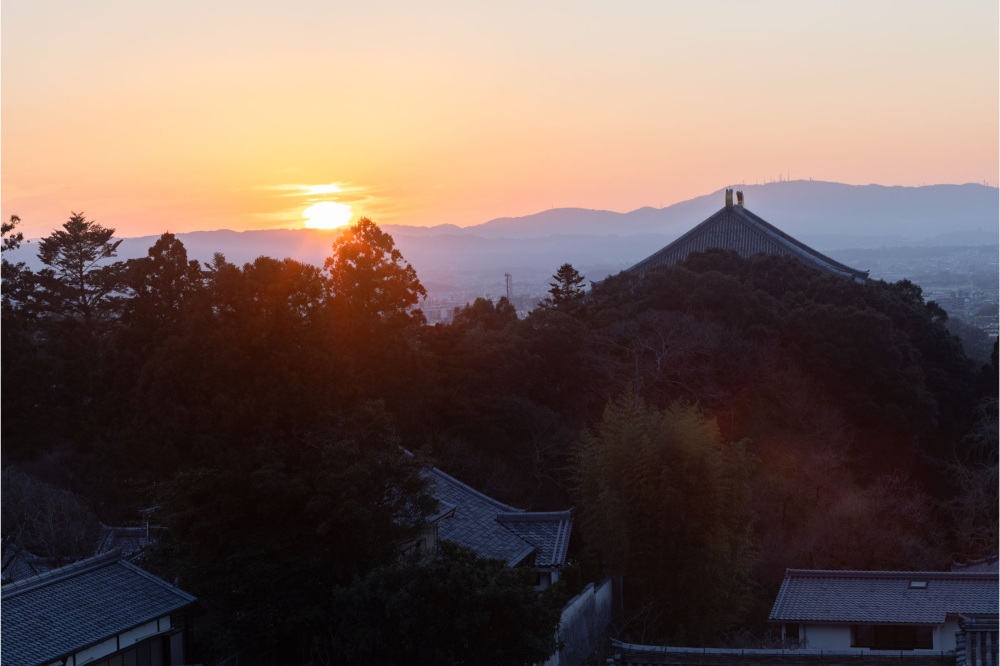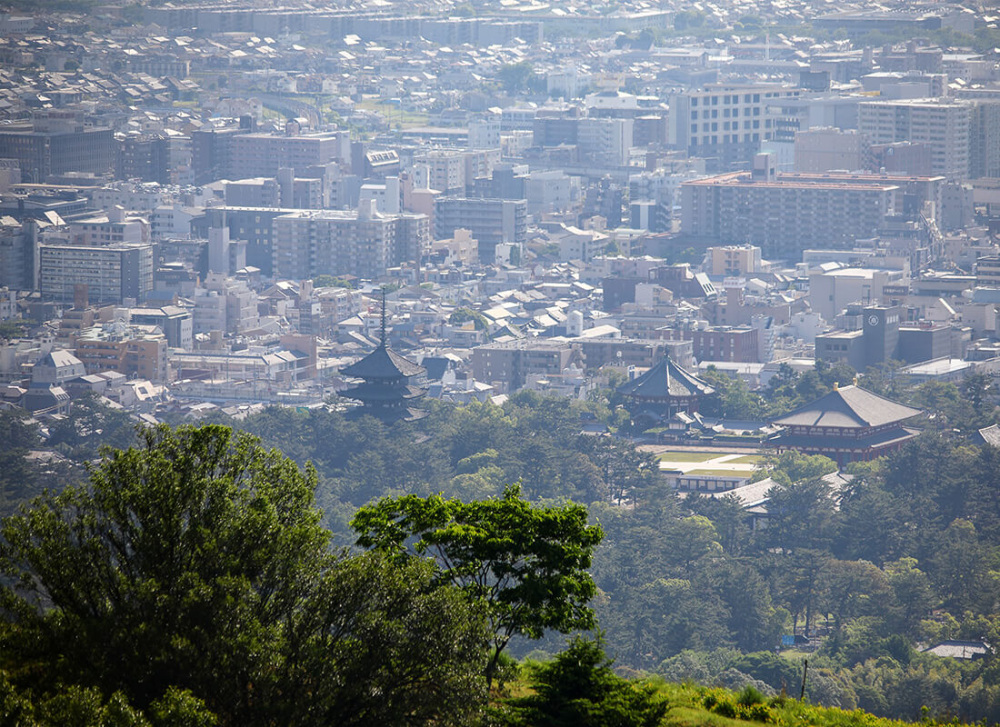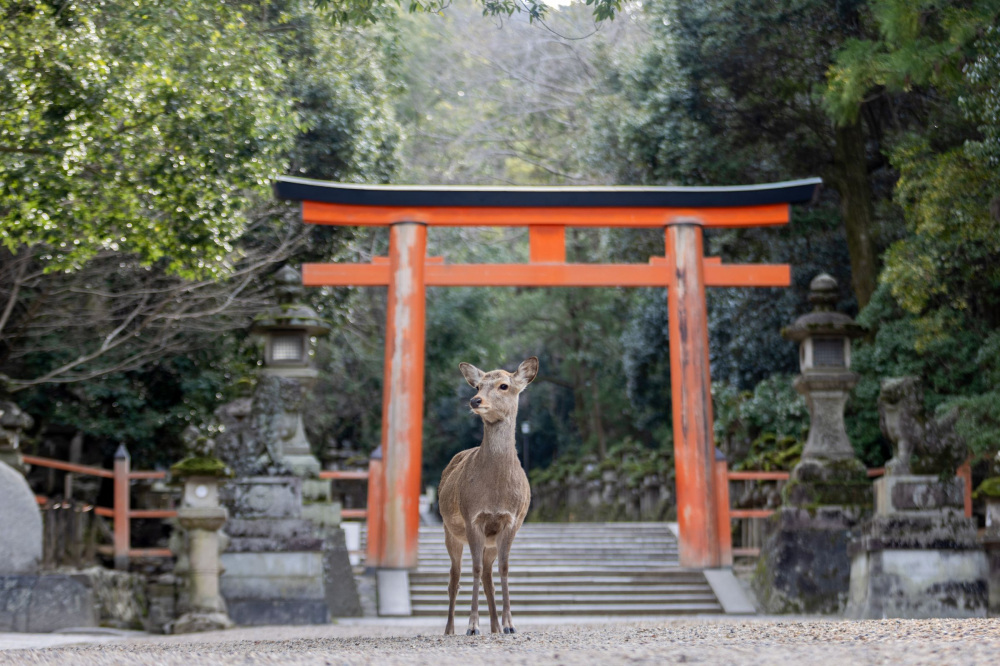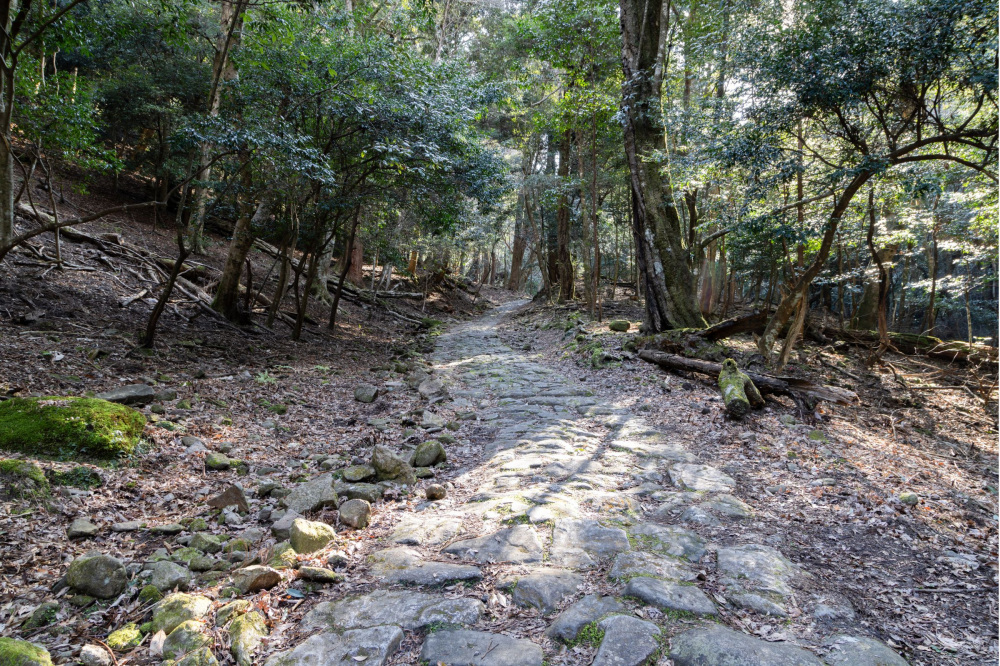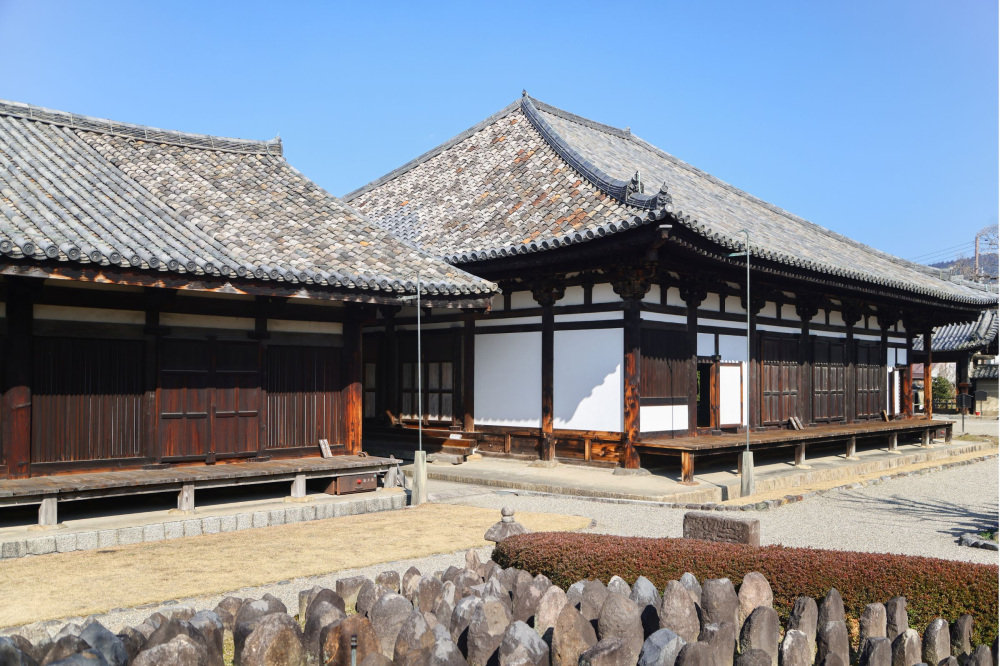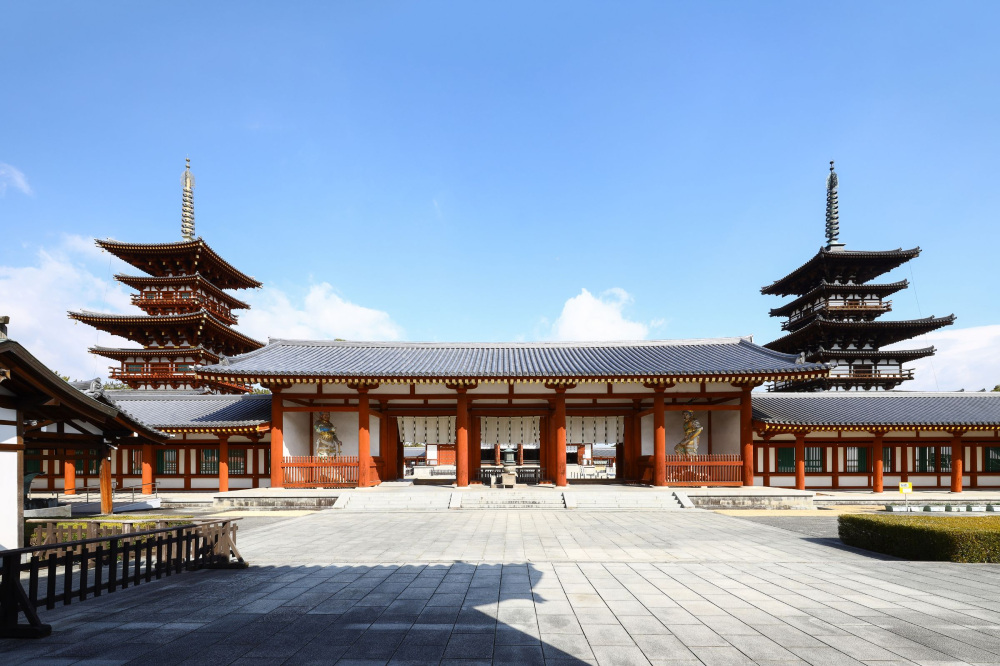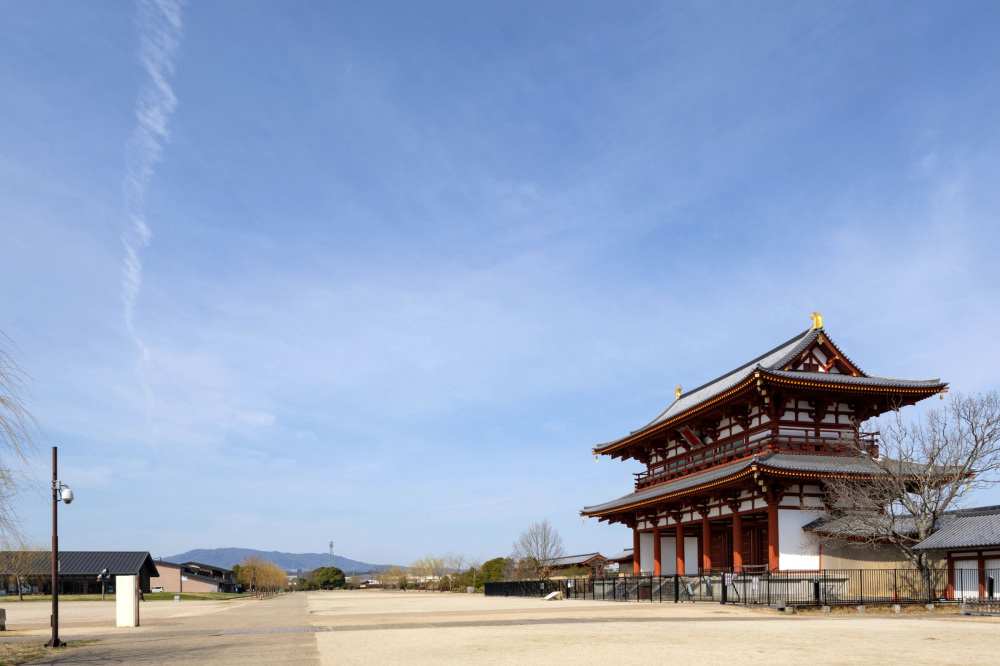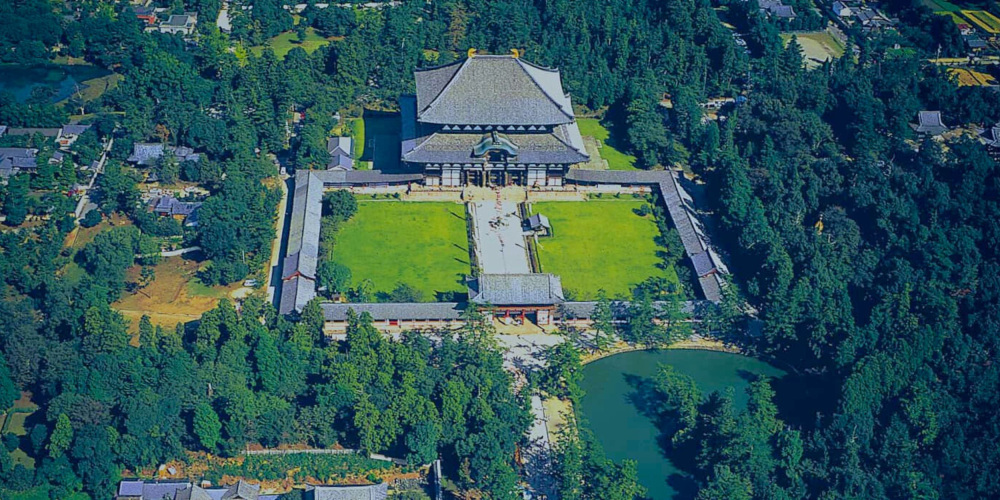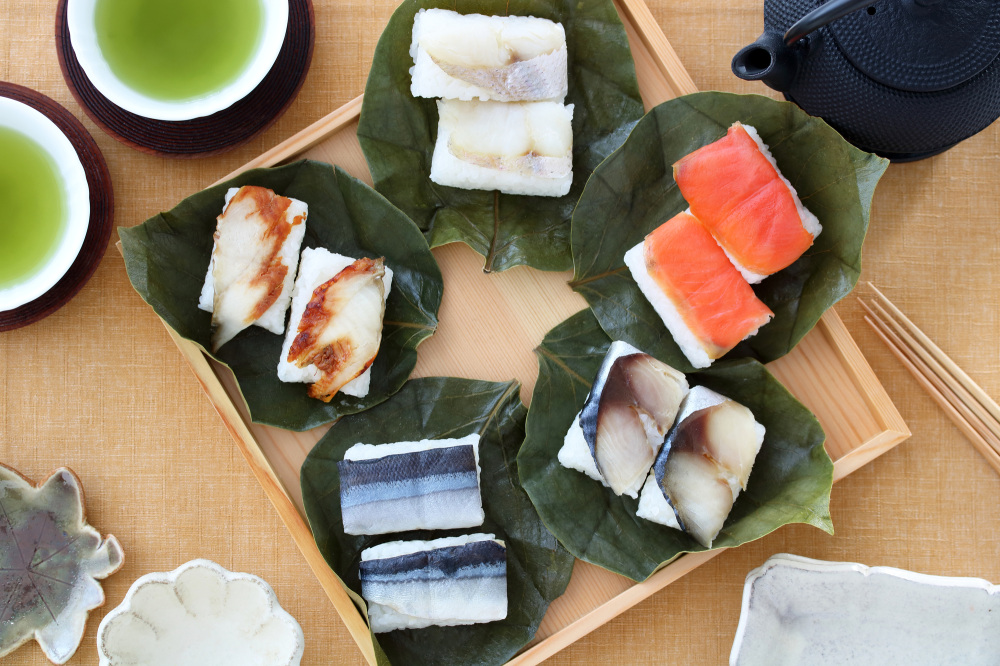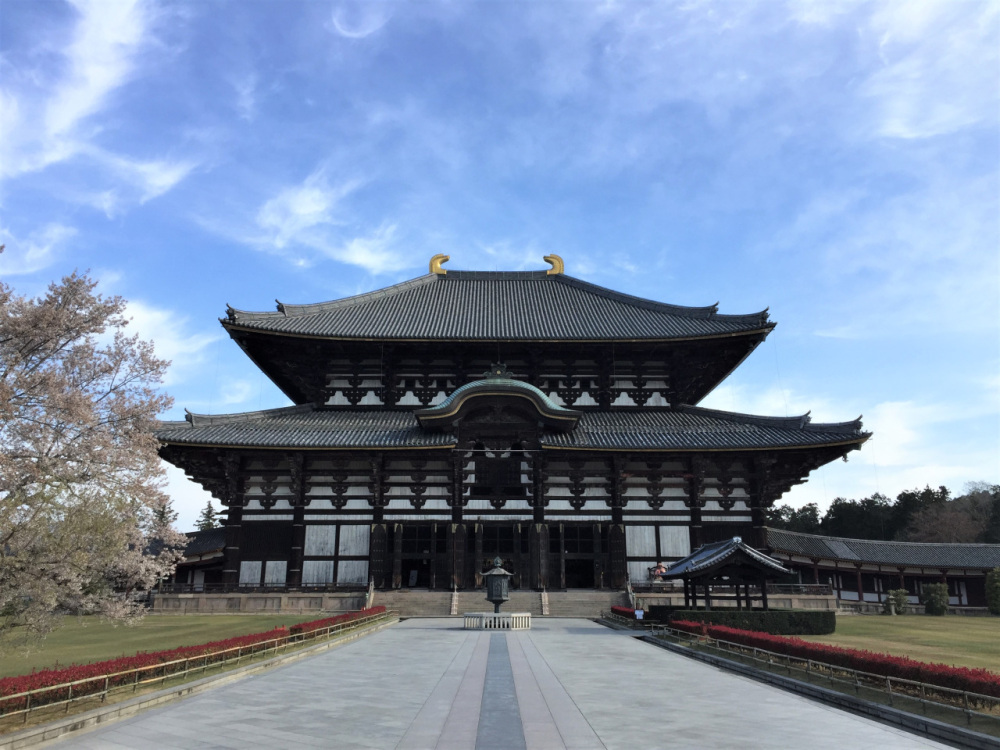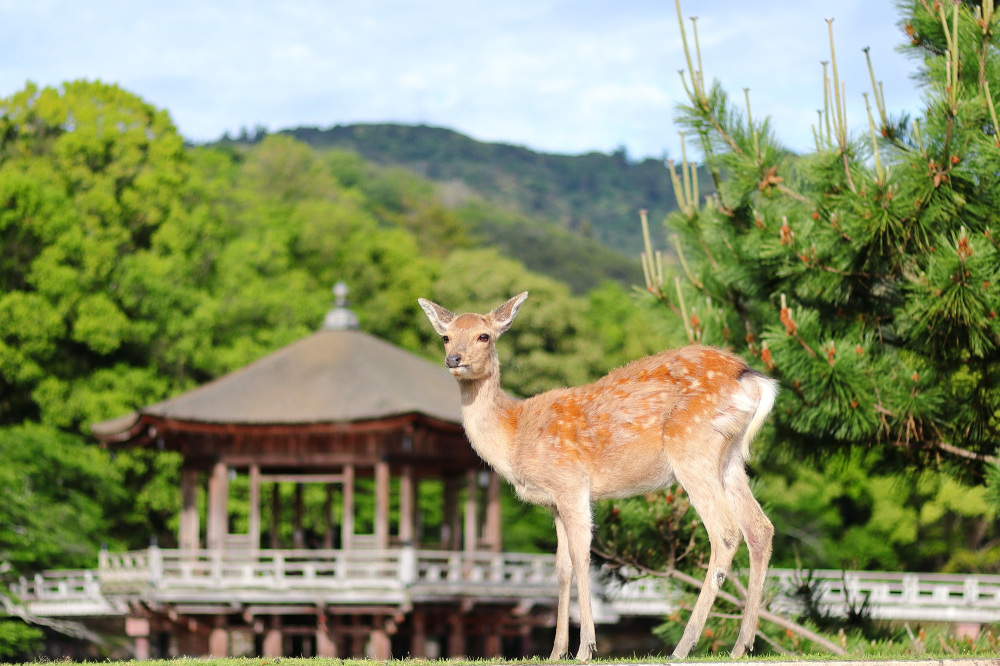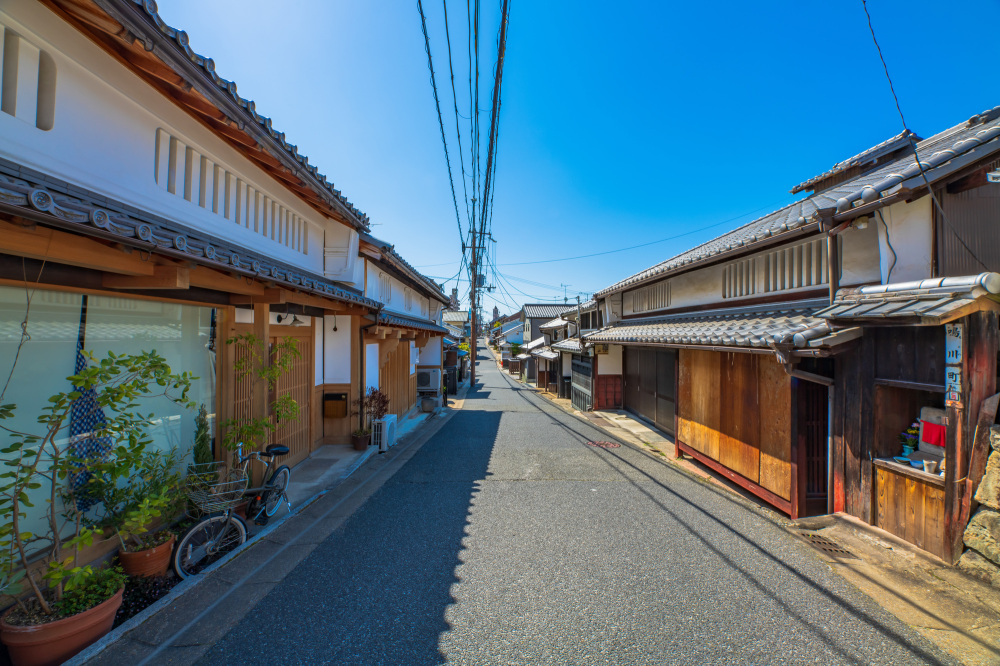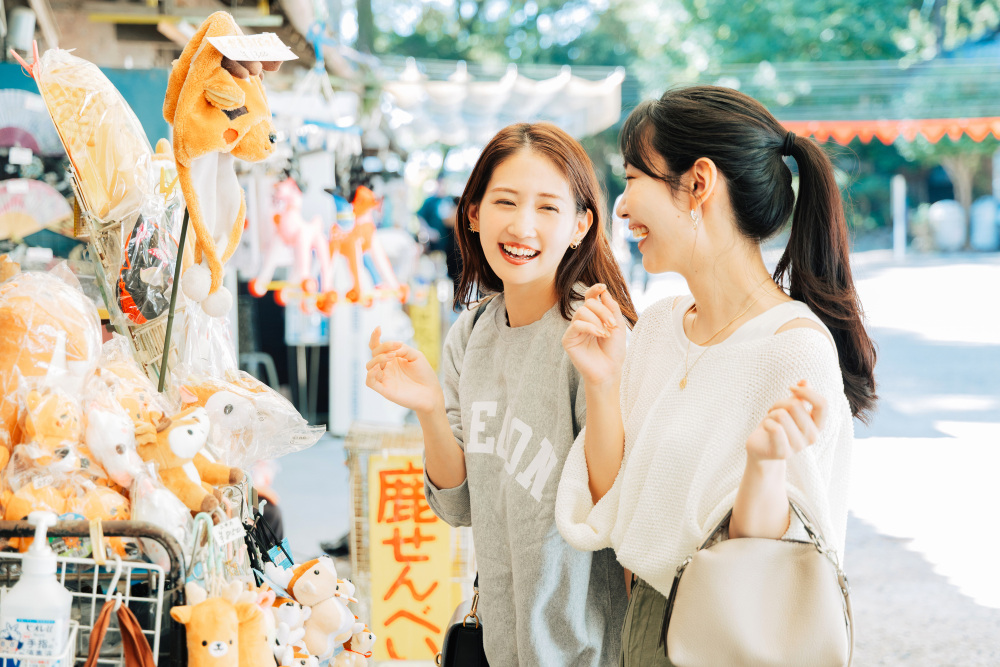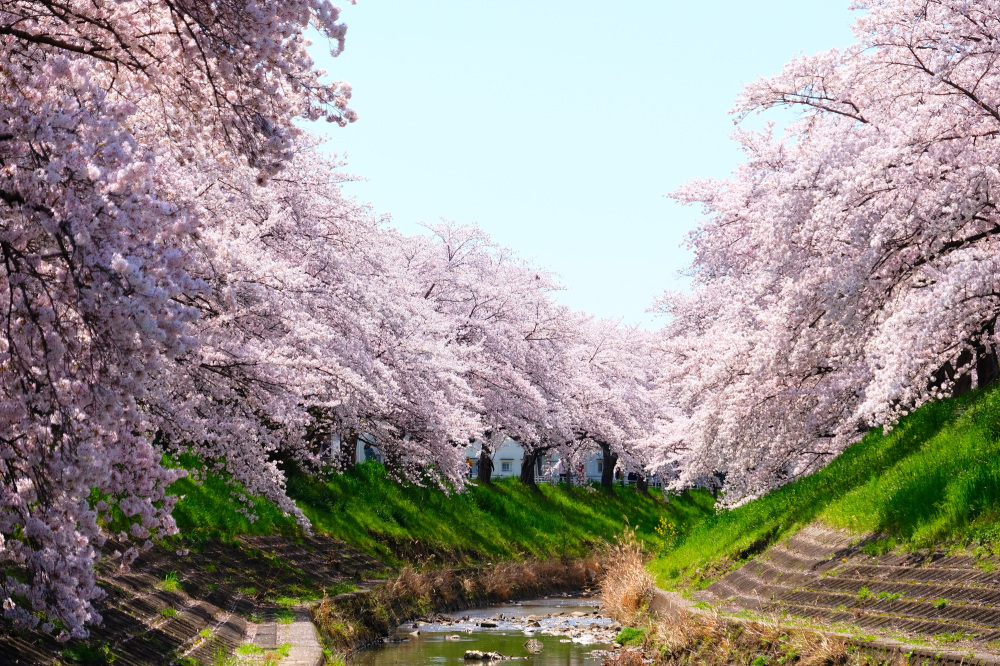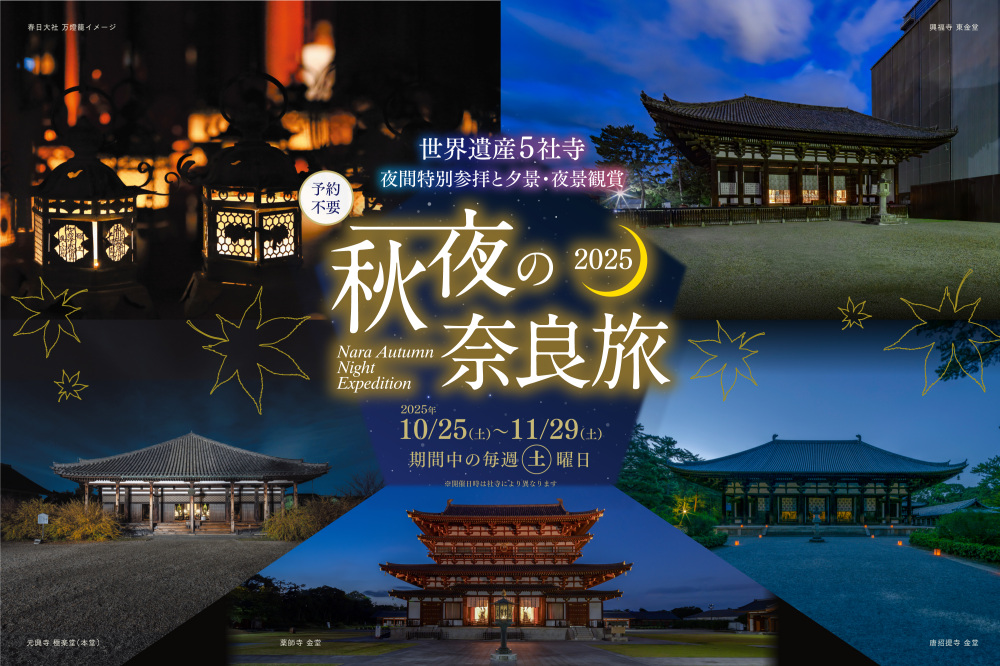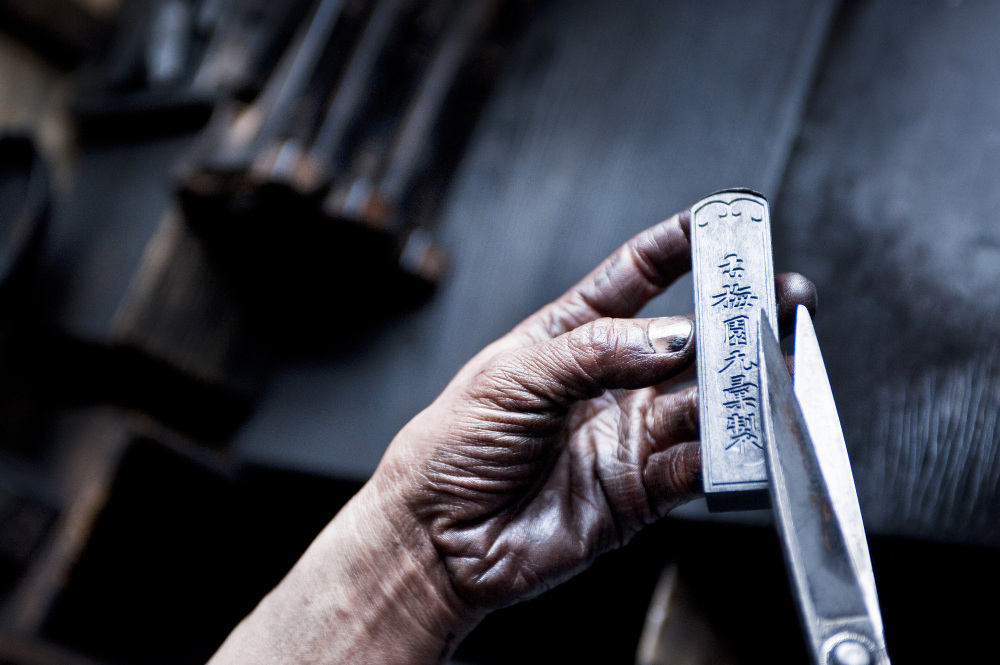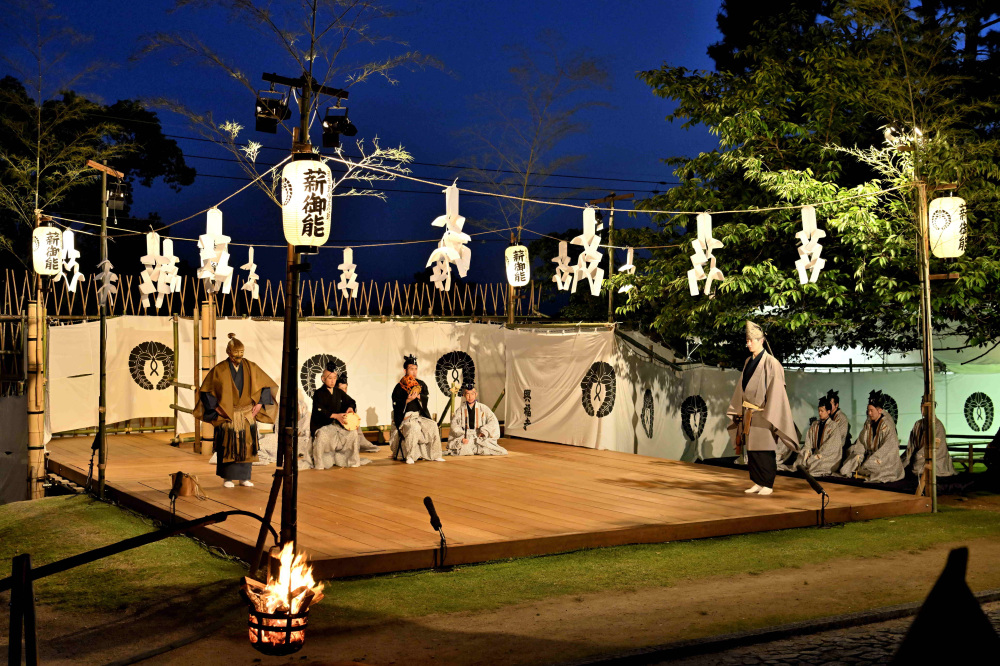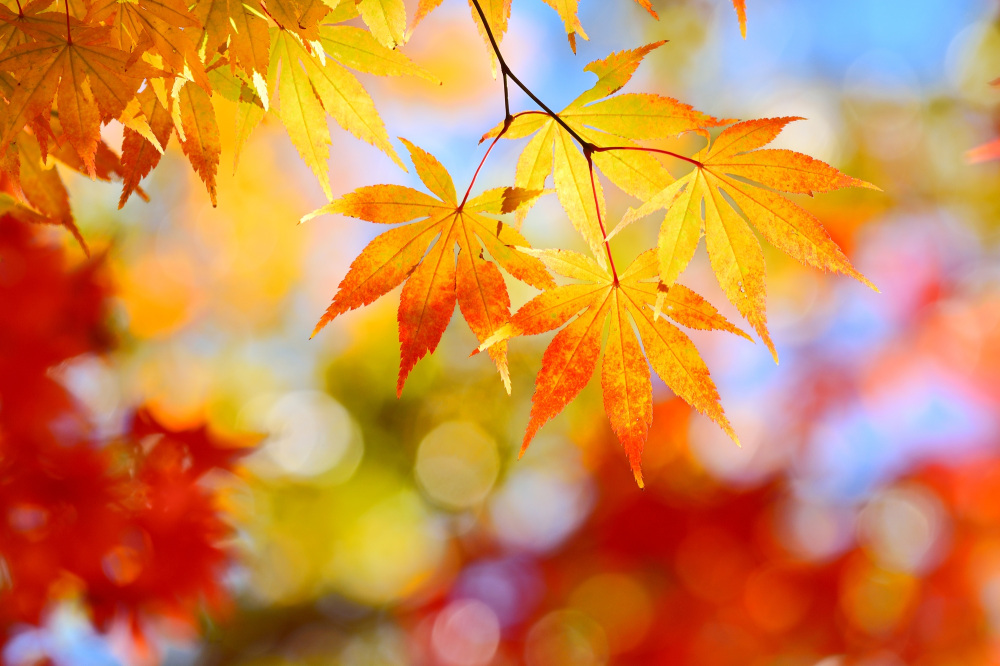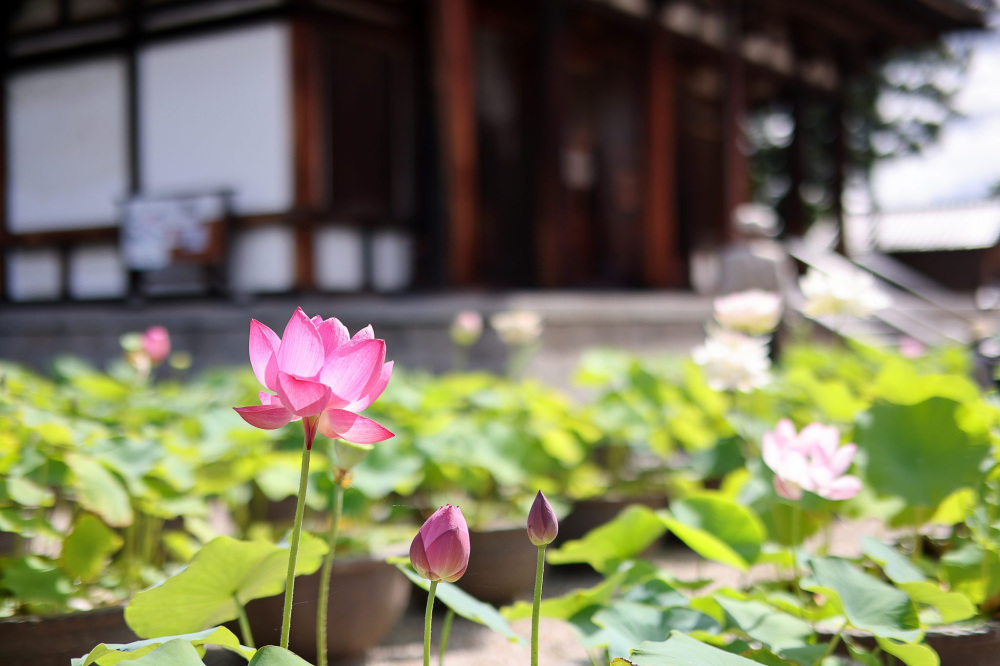The most photogenic "New Eight Scenic Views of Nara" from the World Heritage Site, "Historic Monuments of Ancient Nara".
The "Nanto Hakkei," one of the "Hakkei" (Eight Scenic Views) commonly found throughout Japan, is believed to have originated in the Muromachi period (1336-1573) and gained popularity during the Edo period (1603-1868). "Nanto" broadly means "the southern capital," referring to Nara, the former capital (710-794) located south of Kyoto, the new capital (784-1868).
The "Nanto Hakkei" has long been cherished as a landscape symbolizing the city of Nara.
In 2023, to commemorate the 25th anniversary of the World Heritage registration, an online vote was held to select the most popular spots from the candidates recommended by each World Heritage site (Todaiji Temple, Kohfukuji Temple, Kasugataisha Shrine, Gangoji Temple, Yakushi-ji Temple, Toshodai-ji Temple, and Kasugayama Primeval Forest/Heijo Palace Site), determining the most "Photogenic" photo spots in modern Nara City. These spots are named "New Nanto Hakkei."
There are no specific angles or times for photos labeled with the title of each spot, so feel free to use your imagination to interpret the New Nanto Hakkei.
INDEX
- Todaiji Temple: "View from Nigatsudo Hall"
- Kohfukuji Temple: "Distant view of Kohfukuji Temple from Mount Wakakusa"
- Kasugataisha Shrine: "A deer standing in front of the Kasuga Torii Gate"
- Kasugayama Primeval Forest:"Takisaka no michi road"
- Gangoji Temple: "Japan's oldest roof tiles"
- Yakushiji Temple: "A panoramic view of the Hakuho Garan from near the Nandaimon Gate"
- Toshodaiji Temple: “Kondo Main Hall (Golden Hall)“
- Heijo Palace Site "The Sky of Heijo Palace Site"
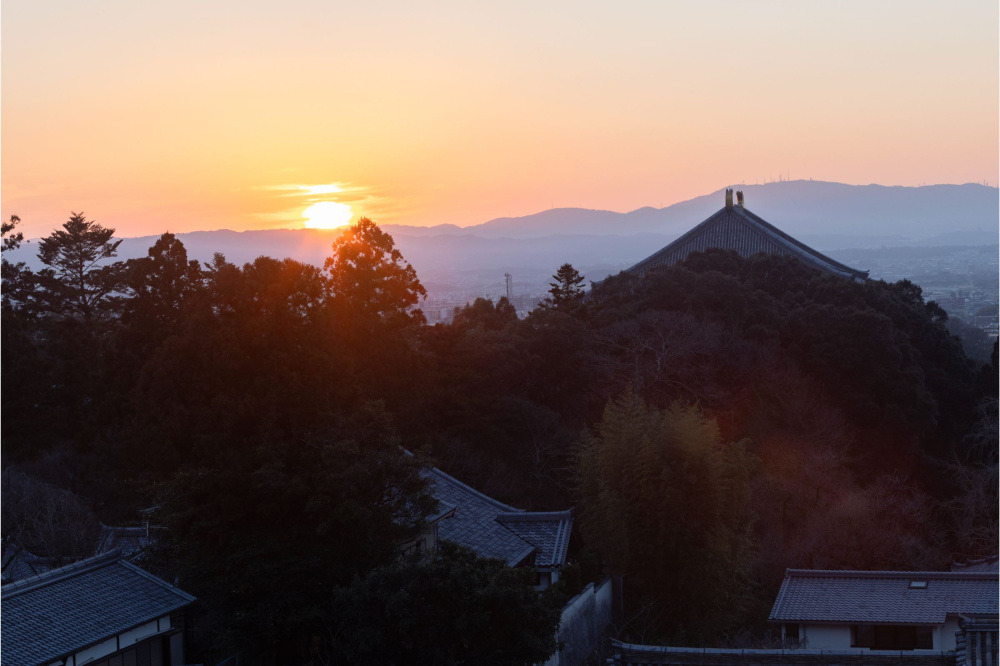
Todaiji Temple: "View from Nigatsudo Hall"
The name Nigatsudo Hall comes from the fact that the Shunie ceremony, the most significant ceremony at Todaiji, is held here in the second month of the lunar calendar. Now, it takes place in the first two weeks of March.
The view from Nigatsudo is stunning at any time of day or season, whether it's early morning, midday, evening, or night, and from any angle. It is especially worth viewing at sunset.
Kohfukuji Temple: "Distant view of Kohfukuji Temple from Mount Wakakusa"
Kohfukuji Temple stands in the same location it has occupied since its construction in 710. Positioned on higher ground, it overlooks the Heijo Palace to the west. Once, this powerful temple extended over nearly the entire area now occupied by Nara Park and the Prefectural Office. As you gaze at Kohfukuji Temple from Mount Wakakusa, you can reflect on the temple's rich history and the prayers of our ancestors.
※ The outstanding 5-story pagoda is currently undergoing long-term repairs and is covered by protective roofs; therefore, it cannot be seen from the outside.
Kasugataisha Shrine: "A deer standing in front of the Kasuga Torii Gate"
The first torii gate of Kasugataisha Shrine is one of the "Three Great Torii Gates of Japan," alongside the large torii gate of Itsukushima Shrine in Hiroshima Prefecture and the large torii gate of Kehi Shrine in Fukui Prefecture. These gates are made of wood and are designated as Important Cultural Properties. Kasugataisha's first torii gate is adorned with large sakaki trees during the Kasuga Festival in March and the Kasuga Wakamiya Onmatsuri Festival in December.
Kasugataisha Shrine also features a second torii gate at the back of the approach. This second torii gate marks the entrance to the more sacred interior of the shrine, where the worship hall is located. From this point onward, all worshippers were asked to worship on foot.
Many deer roam around both the first and second torii gates. The combination of the sacred deer and the torii gates of Kasugataisha Shrine creates a magnificent sight.
Kasugayama Primeval Forest:"Takisaka no michi road"
If you start from downtown Nara, Takisaka no michi road, which goes through the Kasugayama Primeval Forest, serves as the first section of the Yagyu Kaido, the ancient path to Yagyu, a sacred site for samurai swordsmen.
The uneven stone pavement continues, believed to be a remnant of the renovation work completed when the Yagyu clan became the official masters of swordsmanship for the Tokugawa Shogunate and were appointed as feudal lords.
As you walk along this road, you can enjoy the crisp, clear air while listening to the murmuring river and the rustling leaves, which will refresh your mind, no matter when you visit.
Gangoji Temple: "Japan's oldest roof tiles"
The Gangoji Temple once encompassed the entire area of present-day Naramachi, an attractive tourist destination. The main hall (Gokurakubo) and the Zen room (both designated as National Treasures) were initially part of the priests' living quarters and were reconstructed during the Kamakura period (1192-1333). The temple has attracted visitors since the Middle Ages, with numerous stone Buddhas and folk materials discovered within its precincts.
The roof tiles on the north and west sides of the main hall and the east side of the Zen room are made of overlapping round and flat tiles, retaining the ancient style of tiles from the Asuka period when Hokoji Temple, the predecessor of the Gangoji, was founded at the end of the 6th century in the Asuka region as the first Buddhism temple. Those valuable roof tiles are still in use.
You can sense the history of Buddhism's introduction to Japan, which continues to this day.
Yakushiji Temple: "A panoramic view of the Hakuho Garan from near the Nandaimon Gate"
Yakushiji Temple was established in 680, and after the capital was relocated from Fujiwara-kyo to Nara, it was subsequently moved to its current location in 718. Two three-story pagodas, the Eastern and Western Pagodas, were built around the main hall and lecture hall. The unique layout, known as the Yakushiji-style, is also referred to as the magnificent "Ryugu-zukuri" (Dragon Palace style). Unfortunately, repeated fires have destroyed most of the buildings, and only the eastern pagoda remains in its original state. The other structures have been rebuilt.
The sight of the East and West Pagodas in Hakuho Garan (precincts) standing side by side symbolizes Yakushiji Temple. The contrast in color with the East Pagoda represents a quintessential view of Yakushiji Temple today. This is the only place to capture both the East and West Towers in a single photo from the south.
Toshodaiji Temple: “Kondo Main Hall (Golden Hall)“
Toshodaiji Temple was founded in 759 by the Chinese monk Ganjin, who overcame hardships to come to Japan to spread the correct precepts of Buddhism. The temple complex is beautifully surrounded by greenery and still conveys the atmosphere of its founding during the Nara period. Many of the buildings, including the Kondo Main Hall (Golden Hall), renowned for its "Tenpyo roof," retain their appearance from 1,300 years ago.
The full view of the Golden Hall fits into your viewfinder from about halfway down the approach from the Great South Gate (Nandaimon). This masterpiece of 8th-century Golden Hall architecture is unparalleled in the world. When taking photos, we recommend capturing a large shot of the sky.
Heijo Palace Site "The Sky of Heijo Palace Site"
The vast field stretching from Kintetsu Saidaiji Station to Shin-Omiya Station is the Heijo Palace Site. Located at the northernmost end of the extensive capital of Heijokyo, with a total area of about 120 hectares, it served as the home of the Imperial Palace and the government district. Since 1959, the Nara National Research Institute for Cultural Properties has conducted excavation surveys. Buildings and ruins have been restored, and the entire area has been open to the public since 1998.
The view of the sky from the Heijo Palace Site is unobstructed, offering a broad perspective. Whether it's the clouds or the sunset, the scene is breathtaking.
- Todaiji Temple
- Todaiji Temple and its principal image of the Great Buddha, widely known as Daibutu, represent Nara in all its aspects. Daibutsu…

- See More
- Kohfukuji Temple
- The Kohfukuji Temple was one of the seven most prominent temples of the Nara era and a tutelary temple of the Fujiwara clan, the…
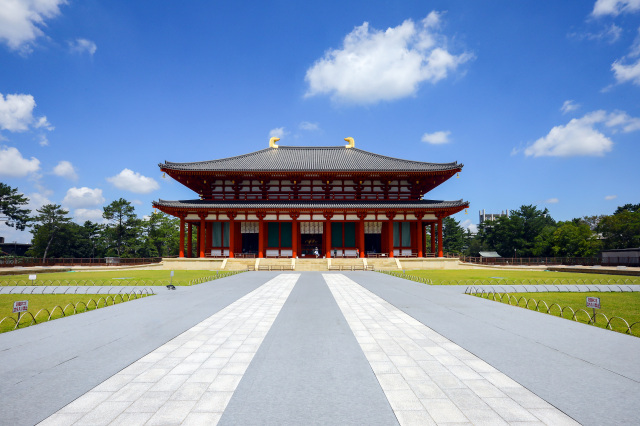
- See More
- Takisaka no michi road
- If you start from downtown Nara, Takisaka Road serves as the first part of the Yagyu Kaido, the ancient road to Yagyu, a sacred …
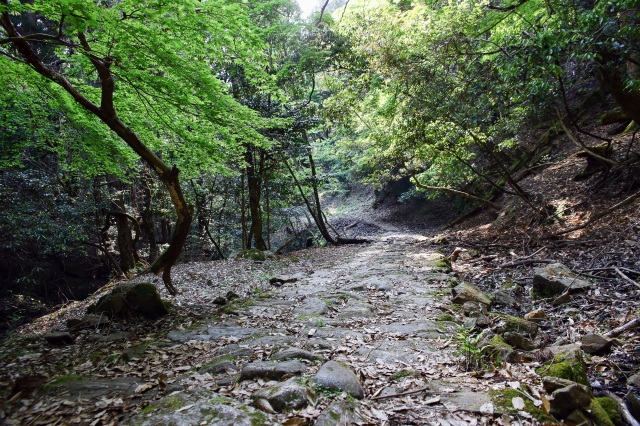
- See More
- Gangoji Temple
- Located in the heart of the Naramachi area, this temple is a must-visit destination for those walking in Naramachi. Its predeces…
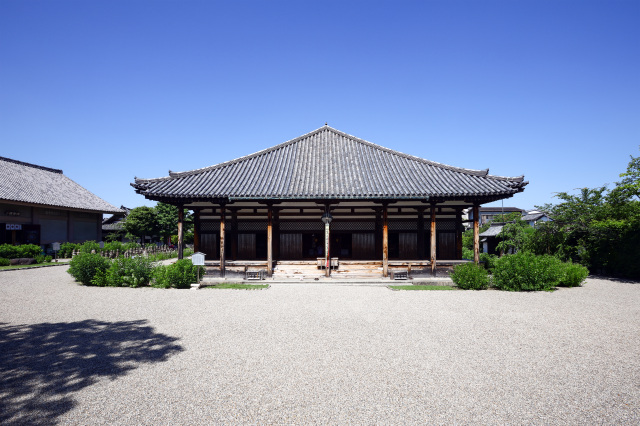
- See More
- Yakushiji Temple
- Yakushiji Temple is a UNESCO World Heritage site. It was established in 680 by Emperor Tenmu as a prayer for the recovery of his…
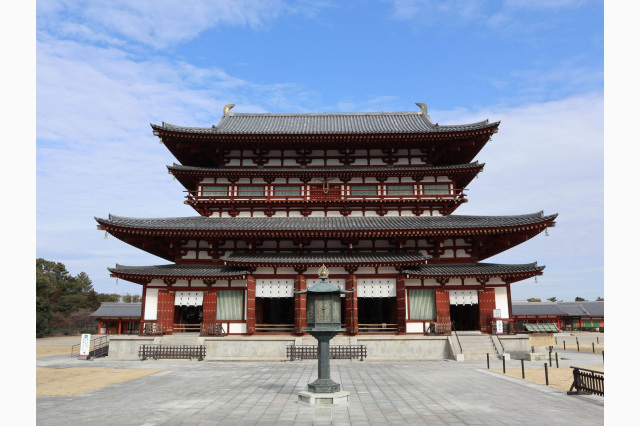
- See More
- Toshodaiji Temple
- Toshodaiji Temple, a UNESCO World Heritage Site, was founded in 759 by the Chinese monk Ganjin, who overcame hardships to come t…
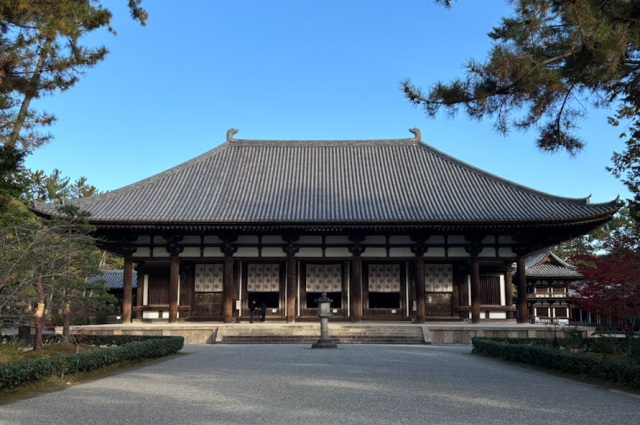
- See More
- Nara Palace Site Historical Park
- The vast field stretching from Kintetsu Saidaiji Station to Shin-Omiya Station is the Heijo Palace Site (World Heritage). Locate…
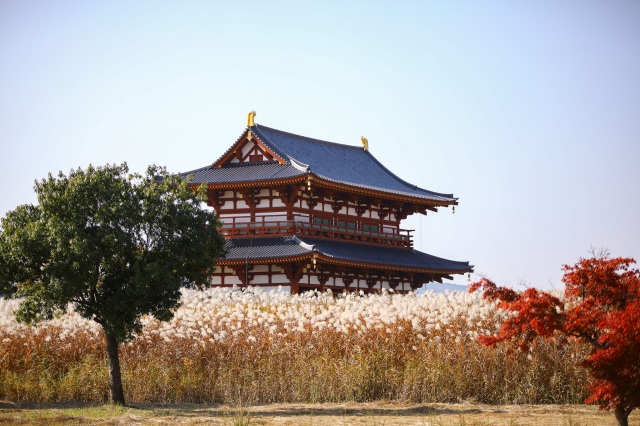
- See More
